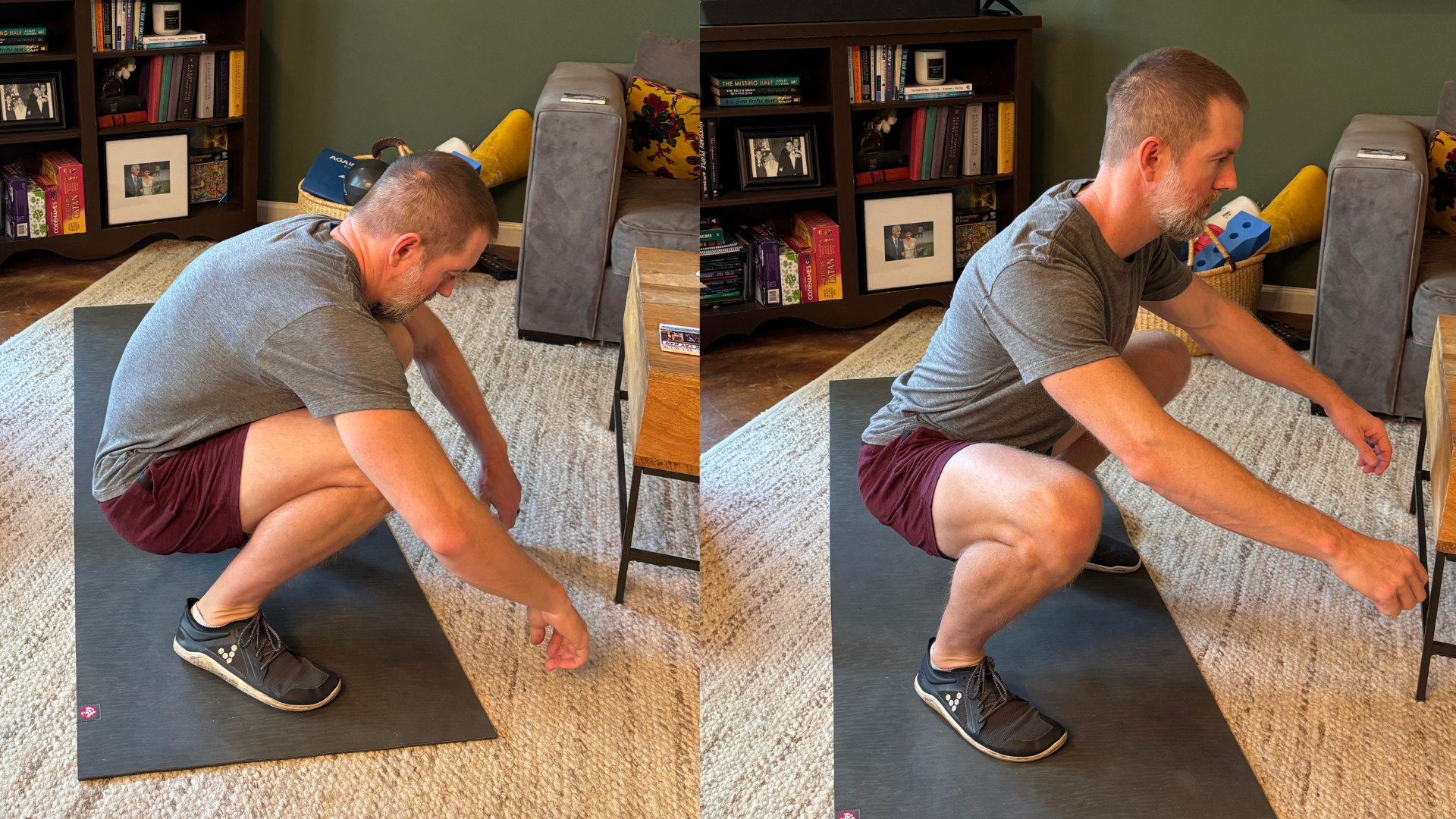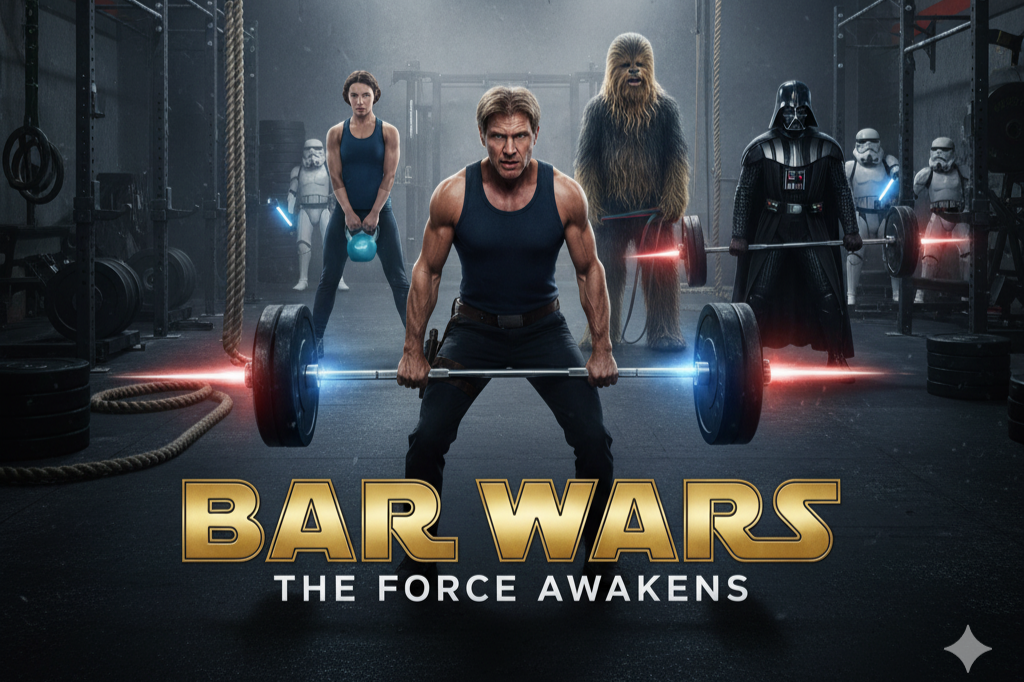Why We Don't Wear/Use Gear
Written by Kyle Ligon - MovementLink.FIT Head Coach
Consider Not Looking to Gear for Help
What happens if you turn to gear instead of trying to improve your functional movement patterns and any underlying root mobility issues? When people’s wrists hurt, instead of fixing the technique or mobility issues causing the pain, they throw wrist wraps on. When people’s backs hurt, they get a weight belt. When people realize their ankles are tight, they get weightlifting shoes that lift their heels up in the air. When people’s arches collapse when they run, they get arch-support running shoes. The list goes on and on, but the commonality between all of these is that none of them address the underlying issue…and actually work to make it worse. Now, with the gear, people are not only able to continue to make their mistakes, but can exaggerate it even more because there’s support.
We typically don’t wear gear in our real lives, so what happens when you do all your training with gear and then you’re in the real world without it?
If you feel like you need a special piece of gear to perform, maybe you should take a deeper look at how functional that training really is.
We do not move perfectly and will never move perfectly. It is inevitable that we are over-, under-, and mis-using muscle and joints which will eventually cause some pain. Pain does not mean that you have an injury, are necessarily doing harm, or that there is something wrong with you, it is simply your body trying to get you do stop doing something. Instead of thinking of it from a macro perspective like thinking our body is trying to get us to stop squatting, think of it from a micro perspective - that our body is trying to protect a very specific area when we are squatting. So the goal is to not stop squatting, but to resolve the root of whatever it is that’s causing the pain signal when squatting.
The majority of the time, technique fixes that push people closer towards high quality, functional movement patterns can resolve the pain right away. When we use our body in the way it was intended, typically it’s happy. We need to be committed as it is going to take thousands of reps before the upgraded movement pattern is our default. When the workout gets hard, subconsciously we may default back to our older, more ingrained way. We must stay committed as the old way just does not have a large buffer from pain. This can be good and bad. Good, because you have immediate feedback about your technique if every time you mess up it hurts. Bad because we need to remember that we have diminished our buffer zone from injury. So, in these scenarios, even when we can get rid of the pain simply by moving better, we still want to start developing our new technique, but be conservative with our intensity to minimize risk and allow the painful pattern to desensitize.
Additionally, we may want to consider exercise selection to simplify technique. One example may be If we had been experiencing knee pain in a squat and have identified a technique fix, we may want to sub wallballs for light thrusters for a couple of weeks as we develop our new squat technique. These are very similar exercises, but catching the medicine ball as we squat add an element of being off balance and having to organizing a high quality squat during the rep where it would be much easier to work on new technique with a simpler exercise like the thruster.
Sometimes though, even with quality movement corrections, the pain still persists. We see this alot with high repetitive things like running, swimming, cycling, and just about every sport. Especially when people start a new program with high repetition stuff like this, things usually feel OK for the first few months, but then fatigue accumulates and some overuse pain enter the picture. That’s not to say these things are bad at all, but we need to be patient and build up our tolerance for them over time. If pain does start to kick in, we need to back off, do our mobility work, and then come back with a much more conservative plan. Working out is a game of stress and recovery and they need to be in balance. It’s easy to get excited when we introduce new things, but we always need to consider that we need to balance our new obsession with building tissue tolerance slowly to avoid overuse injuries.
What are your shoes doing to your feet?
Most exercise gear is very sport-specific. Runners, powerlifters, weightlifters, CrossFitters, and I all wear different shoes. Who’s right? We all are, but for our own different reasons. Powerlifting, weightlifting, and CrossFit are all specific sports, so it makes sense that there may be shoes that best lend themself to those sports. There is nothing in any of those sports that would require you going barefoot; life does however. A major focus on the choices we make within the MovementLink Method are ensuring maximal transfer into our real lives. Our feet, Achilles, calf, etc. are an incredible system that is capable of incredible things and we want to be sure that they are being used like our feet have evolved to be used.
By wearing sport-specific shoes, we prioritize scores in a sport over real world functionality. Can running shoes make your running performance better, maybe, but it will come at a price. Living life with an elevated heel decreases your ankle range of motion. Narrow toe boxes cram your toes together. Cushion allows you to heel-strike in a way that mis-uses muscles and puts a lot of stress on knees and our lower back. All of these create movement habits that deviate from functional movement patterns, causing imbalances. What happens if you want to play sand volleyball, taking a walk on a beach, or just want to be barefoot in your home? With feet that have only been trained to be used in running shoes, you likely won’t fair so well. Unfortunately, once pain enters the equation most people turn to special shoes with more support just making the underlying problem worse. Overbuilt shoes are the root cause of plantar fasciitis and ankle immobility that can lead to knee, hip, and low back pain. A weightlifting belt, wrist wraps, knee sleeves, special shoes, etc., will all develop your body around the gear. Our end game does not involve typical exercise gear, so we don’t wear it when we train.
Barefoot shoes that have a flat, thin, flexible sole and a wide toe-box are a great example of a gear choice that would prioritize functionality over scores.











